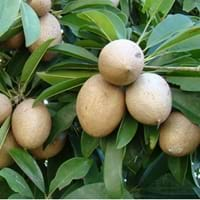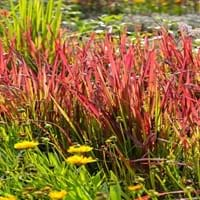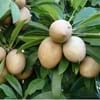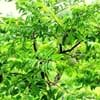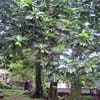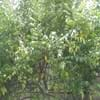Life Span
Perennial
Perennial
Origin
Hybrid origin, Mexico, Central America, South America
Japan
Types
Not Available
Not Available
Habitat
Coastal Regions
Moist Soils, River side, yards
USDA Hardiness Zone
11-15
5-9
Sunset Zone
A1, A2, A3, H1, H2, 1a, 1b, 2a, 2b, 3a, 3b, 4, 5, 6, 7, 8, 9, 10, 11, 12, 13, 14, 15, 16, 17, 18, 19, 20, 21, 22, 23, 24
2b, 3a, 3b, 4, 5, 6, 7, 8, 9, 10, 11, 12, 13, 14, 15, 16, 17, 18, 19, 20, 21, 22, 23, 24
Habit
Upright/Erect
Upright/Erect
Flower Color
Yellow
Not Available
Flower Color Modifier
Bicolor
Bicolor
Fruit Color
Red
Non Fruiting Plant
Leaf Color in Spring
Green, Dark Green
Light Green
Leaf Color in Summer
Green, Dark Green
Light Green
Leaf Color in Fall
Green, Dark Green
Green, Sienna
Leaf Color in Winter
Green, Dark Green
Tan
Leaf Shape
Ovate
Subulate
Plant Season
Spring, Summer, Fall
Not Available
Sunlight
Full Sun
Full Sun, Partial Sun
Type of Soil
Loam, Sand
Clay, Loam, Sand
The pH of Soil
Neutral
Acidic, Neutral, Alkaline
Soil Drainage
Well drained
Average
Bloom Time
Indeterminate
Late Summer
Tolerances
Drought
Drought, Salt
Where to Plant?
Container, Ground
Ground
How to Plant?
Grafting, Seedlings
From Rhizomes, Seedlings
Plant Maintenance
Medium
Medium
Watering Requirements
Needs more water during establishment
Average Water Needs, Keep the ground moist but not water-logged
In Summer
Lots of watering
Lots of watering
In Spring
Moderate
Moderate
In Winter
Average Water
Average Water
Soil pH
Neutral
Acidic, Neutral, Alkaline
Soil Type
Loam, Sand
Clay, Loam, Sand
Soil Drainage Capacity
Well drained
Average
Sun Exposure
Full Sun
Full Sun, Partial Sun
Pruning
Pinch or prune as they grow to promote branching and bushiness
Prune once the plant is tall enough, Remove damaged leaves, Remove dead branches, Remove dead leaves
Fertilizers
14-14-14 Fertilizer, Compost
can go long without fertilizers, Doesn't require fertilization when grown in rich soil
Pests and Diseases
Anthracnose, Aphids, Red blotch, Rust
Not Available, Red blotch
Plant Tolerance
Heat Tolerance, Salt and Soil Compaction
Deer resistant, Drought, Full Sun, Shade areas
Flowers
Showy
Insignificant
Flower Petal Number
Single
Single
Fragrant Bark/Stem
Yes
No
Foliage Texture
Medium
Medium
Foliage Sheen
Matte
Matte
Attracts
Aphids, Not Available, Squirrels
Not Available
Allergy
Stomach pain, Vomiting
Not Available
Aesthetic Uses
Used in parkland
Ground Cover
Beauty Benefits
Anti-ageing, Blackheads, Reduce Bruises
Not Available
Edible Uses
Yes
Not Available
Environmental Uses
Shadow Tree, Soil protection
Air purification
Medicinal Uses
Dehydration, Diabetes, Diarrhea, Nutrients, Weight loss
Not Available
Part of Plant Used
Fruits
Leaves, Root
Other Uses
Application in Handicrafts, Food for animals, Showy Purposes
Traditional medicine, Weaving into Mats and Bags
Used As Indoor Plant
No
Yes
Used As Outdoor Plant
Yes
Yes
Garden Design
Edible, Herb, Vegetable
Not Available
Botanical Name
Manilkara zapota
IMPERATA cylindrica
Common Name
sapodilla , chikoo, Sapota
Japanese Blood Grass
In Hindi
चीकू
Japanese Blood Grass
In German
Breiapfelbaum
Japanische Blut Grass
In French
Sapotillier
Herbe de sang japonais
In Spanish
chicle
Hierba de sangre japonesa
In Greek
sapodilla
Ιαπωνικά Grass αίματος
In Portuguese
sapodilla
Grama sangue japonês
In Polish
Pigwica właściwa, sapodilla
Japoński Krew Trawa
In Latin
sapodilla
Sanguinem Italica Grass
Phylum
Magnoliophyta
Magnoliophyta
Class
Magnoliopsida
Liliopsida
Family
Sapotaceae
Poaceae
Clade
Angiosperms, Asterids, Eudicots
Angiosperms, Commelinids, Monocots
Tribe
Sapoteae
Not Available
Subfamily
Sapotoideae
Not Available
Number of Species
Not Available
Importance of Sapodilla and Japanese Blood Grass
Want to have the most appropriate plant for your garden? You might want to know the importance of Sapodilla and Japanese Blood Grass. Basically, these two plants vary in many aspects. Compare Sapodilla and Japanese Blood Grass as they differ in many characteristics such as their life, care, benefits, facts, etc. Every gardener must at least have the slightest clue about the plants he wants to plant in his garden. Compare their benefits, which differ in many ways like facts and uses. The medicinal use of Sapodilla is Dehydration, Diabetes, Diarrhea, Nutrients and Weight loss whereas of Japanese Blood Grass is Not Available. Sapodilla has beauty benefits as follows: Anti-ageing, Blackheads and Reduce Bruises while Japanese Blood Grass has beauty benefits as follows: Anti-ageing, Blackheads and Reduce Bruises.
Compare Facts of Sapodilla vs Japanese Blood Grass
How to choose the best garden plant for your garden depending upon its facts? Here garden plant comparison will help you to solve this query. Compare the facts of Sapodilla vs Japanese Blood Grass and know which one to choose. As garden plants have benefits and other uses, allergy is also a major drawback of plants for some people. Allergic reactions of Sapodilla are Stomach pain and Vomiting whereas of Japanese Blood Grass have Not Available respectively. Having a fruit bearing plant in your garden can be a plus point of your garden. Sapodilla has showy fruits and Japanese Blood Grass has no showy fruits. Also Sapodilla is not flowering and Japanese Blood Grass is not flowering . You can compare Sapodilla and Japanese Blood Grass facts and facts of other plants too.
